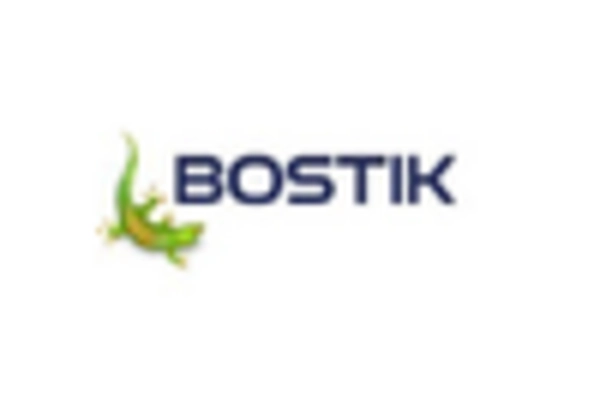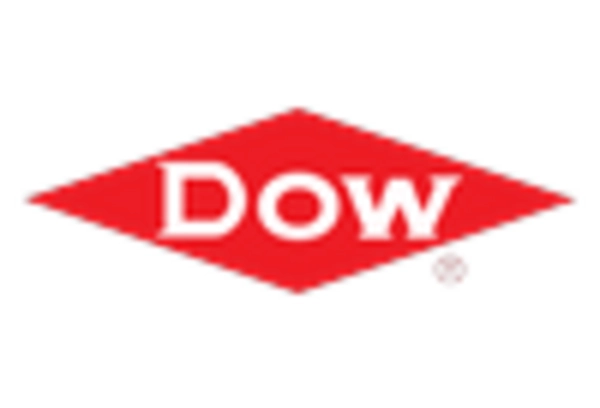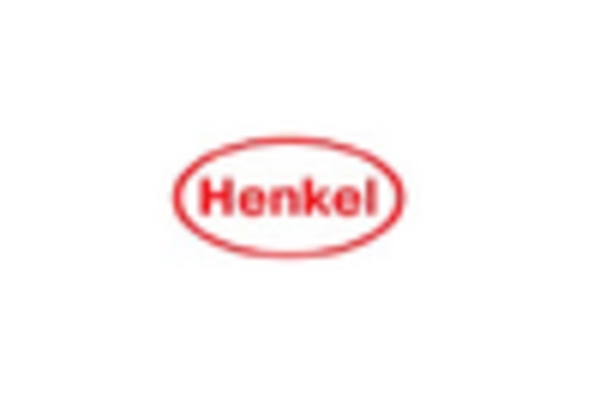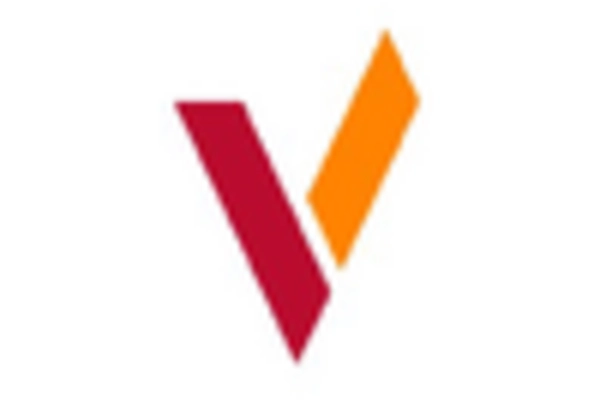Rising Construction Activities
The Construction Silicone Sealant Market is experiencing a surge in demand due to increasing construction activities across various sectors. As urbanization continues to expand, the need for residential, commercial, and industrial buildings rises. In 2025, the construction sector is projected to grow at a compound annual growth rate of approximately 5.5%, driving the demand for high-performance sealants. This growth is further fueled by government initiatives aimed at infrastructure development, which often require durable sealing solutions to ensure structural integrity. Consequently, the Construction Silicone Sealant Market is likely to benefit from this upward trend, as builders and contractors seek reliable products to meet stringent quality standards.
Increased Focus on Aesthetic Appeal
Aesthetic considerations are becoming increasingly important in construction projects, influencing the Construction Silicone Sealant Market. Architects and designers are now prioritizing visual appeal alongside functionality, leading to a demand for sealants that not only perform well but also complement the overall design. Silicone sealants are available in various colors and finishes, allowing for seamless integration into diverse architectural styles. This trend is particularly evident in high-end residential and commercial projects, where the aesthetic quality of materials is paramount. As a result, the Construction Silicone Sealant Market is likely to expand as manufacturers innovate to meet these aesthetic demands.
Regulatory Compliance and Standards
The Construction Silicone Sealant Market is significantly impacted by the increasing emphasis on regulatory compliance and industry standards. Governments and regulatory bodies are implementing stringent guidelines to ensure the safety and performance of construction materials. This has led to a heightened demand for silicone sealants that meet these regulations, particularly in terms of fire resistance, durability, and environmental impact. In 2025, it is anticipated that compliance with these standards will drive a substantial portion of the market growth, as construction companies seek to avoid penalties and ensure the longevity of their projects. Consequently, the Construction Silicone Sealant Market is poised for growth as manufacturers adapt to these evolving requirements.
Growing Demand for Energy Efficiency
Energy efficiency has become a pivotal concern in the construction sector, influencing the Construction Silicone Sealant Market significantly. As energy costs rise, builders are increasingly adopting materials and technologies that enhance insulation and reduce energy consumption. Silicone sealants play a crucial role in this context, as they provide superior sealing capabilities that prevent air and moisture infiltration. In 2025, the market for energy-efficient construction materials is expected to reach USD 500 billion, with silicone sealants being a key component. This trend indicates a shift towards sustainable building practices, thereby propelling the Construction Silicone Sealant Market forward as stakeholders prioritize energy-efficient solutions.
Technological Innovations in Sealant Formulations
The Construction Silicone Sealant Market is witnessing a wave of technological innovations that enhance the performance and application of sealants. Recent advancements in formulation technology have led to the development of silicone sealants with improved adhesion, flexibility, and durability. These innovations not only meet the evolving needs of the construction industry but also comply with stringent environmental regulations. For instance, low-VOC (volatile organic compounds) formulations are gaining traction, appealing to environmentally conscious consumers. As a result, the Construction Silicone Sealant Market is likely to see increased adoption of these advanced products, which offer superior performance in various applications.
















Leave a Comment